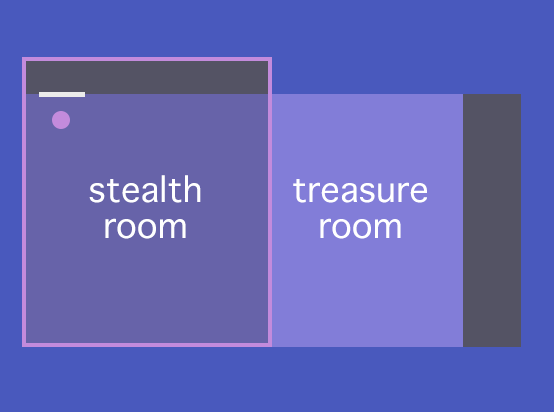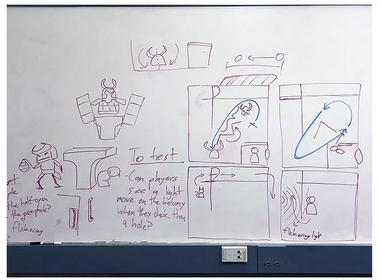Trespass
Game Introduction
Video game walkthrough
Summary:
Overview:
Trespass is a VR game exploring how to combine VR technology and narrative together. It is developed with UnityVR and HTC VIVE. This game invites the player to be a ninja and experience a VR vignette of 16th century Japan. The mission of the player is to steal a prized sword undetected.
Trespass makes use of Impossible Spaces, a concept for room-scale VR experiences that enables players to move in a virtual space much larger than the physical room they occupy. This allows players to explore the virtual space without breaking their sense of immersion in the narrative.
Trespass is dramatically structured around stealth and allows the player to duck, hide, and maneuver in virtual space that is technically "folded" to fit within a smaller actual room.
This game was considered as the best among all the ETV (now PEN) Lab summer semester projects by many guests who came on the demo day.
Process:
-
Contextual Review & Defining Problem
-
Reading Papers
-
Exploring the affordances of VR as a medium
-
-
Ideation
-
Brainstorming
-
Idea pitching for feedback
-
-
Repeating Prototyping
-
Storyboards
-
Building test version to get feedback
-
Iterating and completing the design
-
-
Evaluating
Our purpose was to research how to use VR as a platform for storytelling. So we brainstorm for scenarios and corresponding game mechanics for the VR game.
After deciding to develop a stealth game, we started to design the levels with the Impossible Spaces technology to create a seemingly larger room.
We invited testers with different VR experiences and demographic backgrounds to try out our game. We used observations, questionnaires, and interviews to get the accurate feedback.
The below were our foundings. For details, please click on the report.
1. A seemingly hostile NPC will draw the user’s undivided attention and there are ways of using this effectively.
2. If a narrative depends on the user examining their environment to find a hidden route, the user is unlikely to shift their focus from the guard.
3. Consistently, fear and NPC interactions have been powerful motivators and opportunities for increased immersion.
Because we had new findings every time we observed testers, we redesigned the room several times.
We finally added the ending scene, respawn scene and instruction scene to offer a more completed game experience.



Impossible Space:
The applications of the impossible space in this game are listed here:
-
Use windows, holes and similar objects to show the space outside the virtual room.
-
Shift the room smartly when the player is distracting by some game events to reuse the physical space again and again.
Images:







